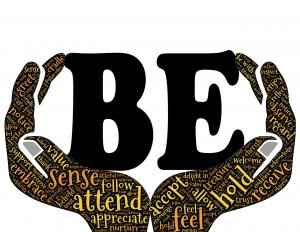“The playground of the mind is living breathing art, and that is how I treat dreaming. So what’s the secret? How do you get started? It’s not hard to do.” ~Ian A. Wilson
It is my distinct pleasure to introduce to you a fellow dreamer who I have invited to be my guest writer again today for part two of his article on Dreaming. He has graciously accepted and sent me this second wonderful, information-packed article on The Art of Dreaming.
The author of this article, Ian A. Wilson, and I recently met on Twitter and have been sharing dreams and comments ever since. And now I am pleased to share with you Ian A. Wilson and his amazing dreams and secrets about Lucid Dreaming. Please enjoy part two of this article, and if you have not already read it, the link to part one is at the bottom of this article.
Above and Beyond The Art of Dreaming (Part 2 of 2)
By Ian A. Wilson
The playground of the mind is living breathing art, and that is how I treat dreaming. So what’s the secret? How do you get started? It’s not hard to do.
You already have 5-6 dreams per night so if you do not remember them the first step is taking an interest and have a willingness to participate in your ongoing dream adventures. Many dream techniques that exist which are very beneficial; others may be a bit too complicated. The best approach is a progressive one where you stick with what works and let go of anything that doesn’t.
I’ll share my process for lucid dreaming, and it covers all the basics that should get anyone started. Just know like going to the gym you don’t walk in on the first day and come out looking like Arnold Schwarzenegger. Like any skill, it takes consistency and practice to get good at it. Just like playing the piano start with the basic foundation and build upon it over time.
The most important key to successful dreaming is participation.
Without the intent or interest to participate in your already ongoing dream adventures how can you expect any results? All that is required is in this first step is taking the art of dreaming seriously enough to want to have fun in your own dream world.
Three key cognitive areas must develop for you to have successful, vivid and realistic dreams.
Those three areas are Memory, Awareness, and Perception. Without developing memory, you enter a state of sleep induced amnesia where dreams take place but are not being remembered.
Awareness relates to how conscious and lucid you are in the dream.
Entering any altered state of consciousness affects awareness and developing highly acute and focused awareness geared for dreaming is where all the fun begins. Limited awareness can keep you unable to break free of the immersion dreams cause tricking you for the time that you might be in reality and not a dream at all.
Perception is very important as it covers all of your senses.
These include vision, hearing, taste, touch, and smell. The more dominant senses in dreams are sight, hearing and touch however you can develop the ability to taste and smell, even feel changes in temperature. Everything we experience in our waking life can be similarly experienced in the dream.
The goal is to create equal to or greater levels of memory, awareness, and perception during dreams in the same way you experience these cognitive attributes in waking life. Deficiencies in any of these three areas impact the quality of the dream experience which becomes self-evident along the way. You can already gauge where you level of memory, awareness, and perception in your current dreams are at and improve from there.
It’s my personal opinion that for most people, these attributes are in a state of atrophy and are under-developed but in teaching people, even people over 60 how to lucid dream I’ve discovered that any attention and participation we give to our natural process of dreaming can yield results. The more consistent you practice developing these atrophic areas of cognition, the more they will increase towards your optimal goal of equal to or greater than how they work in your waking life.
The time required to prepare for dreaming is no more than about 5 minutes before falling asleep and 5 minutes when you wake up. It is far easier than going to the gym and since you are going to be sleeping anyways why not prepare yourself for dreaming at the point of going to bed, and review the results upon awakening as part of a daily routine. It’s 10 minutes that can change your entire life. Not a demanding investment at all.
Memory is by far the most important attribute to develop because without it no level of awareness or perception will matter because you will wake up to a blank state of amnesia. To develop memory, you need to tell yourself as you fall asleep that you want to remember your dreams as clearly and vividly as you remember your waking life. Always reference your waking life equivalent and use that as your goal post when applying that to your dream life and tell yourself you want it to be equal or greater to how you remember things right now.
As you are falling asleep, repeat that intent a few times as it relates to memory.
When you wake up, it’s important not just to get caught up in the dramatic grind of life. Wake up, and then ask yourself what you dreamt and started to recall any fragments, even the dimmest memory. This simple step can trigger a wave of memory. In the beginning, it helps to write anything down that you remember. Writing down the dream is very beneficial in developing dream memory. Also, it’s nice to go back and read some of those fun dreams later on in life. The dream journal is a proven part of the over-all dream experience, especially when developing your ability to remember them.
A person who came by one of my articles told me all they did was focus on memory because it was the one area they realized they had the most problems. The moment they started to state their intent to remember their dreams, for the first time in years, they started to have dream recall. They remarked at how simple and easy it was, and realized it was just in neglecting to participate that these already existing 5-6 dreams a night went unnoticed.
HypnoArt-Pixabay-free-No-attribution-required.jpg
Just like memory, as you fall asleep, you can shape your intent to improve your awareness and perception using affirmations programming your subconscious mind.
Here are the three affirmations that will help improve memory, awareness, and perception.
- I am allowing myself to remember my dreams equal to or greater than my waking life in vivid and clear detail.
- I am allowing myself to be as awake, aware and conscious equal or greater to how I am aware right now during. I want to experience being fully conscious in my dream while my body is asleep.
- I am allowing myself to perceive the dream equal to or greater than how I perceive my waking life with full visual, audible, tactile feedback.
In your pre-sleep process, you can use any custom affirmation to guide the dream content. The above three are geared to improve the most important cognitive attributes for a fully realized dream experience.
Start with these three for a week and see what kinds of improvements arise.
You do need to stay consistent meaning it’s not something you do once and then never again. Take advantage of any opportunity to sleep as an opportunity to dream and start programming what you want. Get in the driver’s seat of this nighttime adventure.
There are also focus techniques that you can do during the day that help improve the quality of your dreams at night. Using mindfulness or all-day-awareness is something that takes our waking life and treats it as a template for dreaming allowing us to draw on experiences here to then reproduce as a dream later.
3413745615_657f4320b9_o.jpg 3413745615_657f4320b9_o.jpg
3413745615_657f4320b9_o.jpg
For example, if you want to improve taste in dreams, you can take the time while eating something you enjoy and become very aware of all the sensations but as you are doing it, you impress the experience with the intent that you will dream equal or greater. I did this with chocolate as an example. I wanted to experience taste so would eat some chocolate while awake impress the experience with the intent to dream of eating chocolate. While eating, I would tell myself to remember the sensation of taste and impressed that intent towards dreaming of it.
Over time, I started to have dreams where chocolate not only tasted as real as waking life chocolate, but it did taste better. I didn’t stop at chocolate, and as this developed, it made dining out in dreams a wonderful and exceptional experience.
Here is a link just one dream where I take advantage of eating all sorts of foods for no other reason other than it’s fun to do.
http://youaredreaming.org/2018/09/09/september-9th-2018-lucid-dream-decadence-tasty-experiences/
Using waking life experience as a measurement or goal in the dream state does lend itself when it appears in the dream state. I’ve always been about better-than-life dreaming and encourage the same approach with anyone interested in becoming a master of their own dream world.
For a more comprehensive article on lucid dreaming techniques and all-day-awareness, I have a free guide entitled, “A progressive guide to lucid dreaming” which is freely accessible here:
http://youaredreaming.org/2017/08/19/progressive-guide-lucid-dreaming/
If you liked this article, please share it with friends and family who may be interested in dreams.
Here is the link to Part 1 of this 2 part blog on Above and Beyond the Art of Dreaming
http://www.patheos.com/blogs/aboveandbeyondthe5senses/2018/10/the-art-of-dreaming-part-1-of-2/
Guest Writer Bio:
Ian Wilson has been a lucid dream explorer since 1987 and has enjoyed lucid dreaming nearly every night for 31 years. He has written several free articles on dreams since 1998 from, “A Course on Consciousness,” an ebook entitled, “You Are Dreaming,” an abstract entitled, “The Theory of Precognitive Dreams” and many more. He believes in open-source dreaming making dream related material freely accessible to those interested in advancing themselves in the Art of Dreaming. Website- http://www.youaredreaming.org/ E-mail: [email protected]
youtube: https://www.youtube.com/channel/UCfsKtwl6YW9-eMKwM7uP9DQ
 About the Author: Kathleen (Kat) O’Keefe-Kanavos is a VIDEO Podcaster, a three-time Breast Cancer Survivor, seen on Dr. Oz, DOCTORS, NBC, & CBS. Her Divine Dreams diagnosed her illness. Kat was a Research Participant for Duke University’s Dr. Larry Burk‘s Breast Cancer Dream Research Program. They co-wrote, Dreams That Can Save Your Life. She is a Syndicated Columnist, TV Producer/Host and award-winning Author/Lecturer who promotes patient advocacy and connecting with Divine Spiritual-guidance through Dreams. “Don’t tell God how big your problems are. Tell your problems how big your God is.” Learn more @ www.KathleenOKeefeKanavos.com
About the Author: Kathleen (Kat) O’Keefe-Kanavos is a VIDEO Podcaster, a three-time Breast Cancer Survivor, seen on Dr. Oz, DOCTORS, NBC, & CBS. Her Divine Dreams diagnosed her illness. Kat was a Research Participant for Duke University’s Dr. Larry Burk‘s Breast Cancer Dream Research Program. They co-wrote, Dreams That Can Save Your Life. She is a Syndicated Columnist, TV Producer/Host and award-winning Author/Lecturer who promotes patient advocacy and connecting with Divine Spiritual-guidance through Dreams. “Don’t tell God how big your problems are. Tell your problems how big your God is.” Learn more @ www.KathleenOKeefeKanavos.com
Photo Credit:
3413745615_657f4320b9_o.jpg

 httpspixabay.comenbeautiful-nature-sunset-fantasy-3325372Tweetyspics-FREE-for-commercial-use-No-attribution-required.jpg
httpspixabay.comenbeautiful-nature-sunset-fantasy-3325372Tweetyspics-FREE-for-commercial-use-No-attribution-required.jpg











